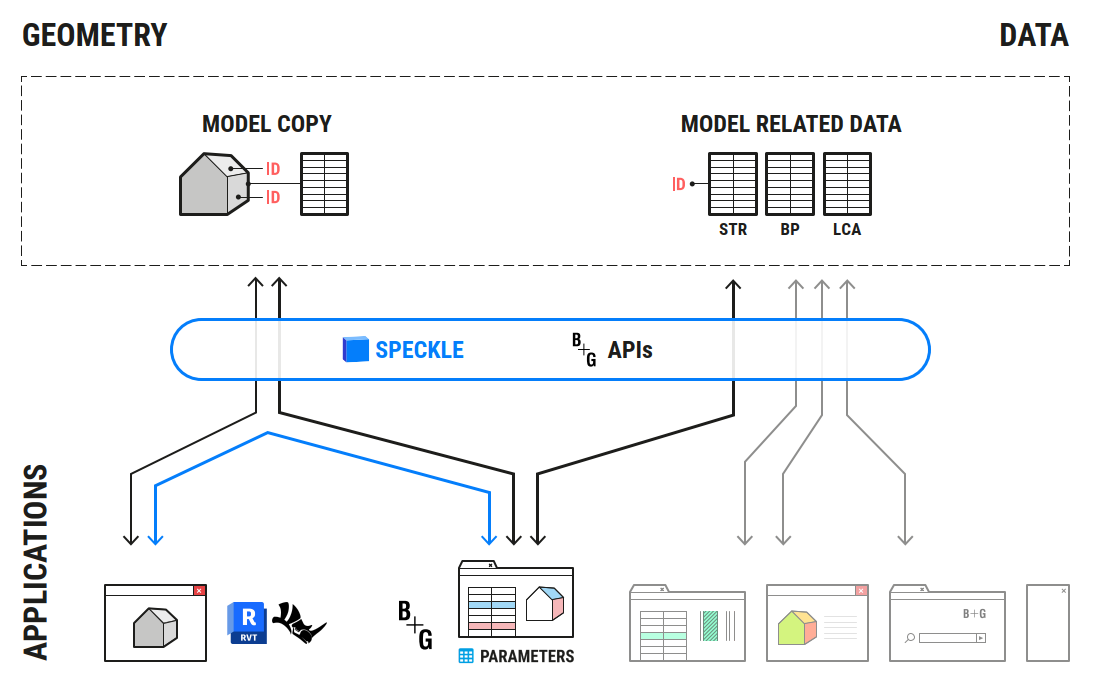The Bollinger+Grohmann Speckler: Steffen Samberger
Steffen, an architect turned software developer, works at the Design Technology group at Bollinger+Grohmann (B+G), a Europe-based engineering practice that uses Speckle to improve collaboration across multidisciplinary teams.
Steffen leveraged Speckle and his programming skills to make current workflows more efficient. We recently spoke to Steffen about an app he built using Speckle.
Leveraging Speckle at Bollinger+Grohmann
B+G has been using Speckle as a platform to upload projects and make data accessible to the broader team. Inspired by previous Speckle hackathon winners, Steffen started building a tool to enable structural engineers to update and edit Revit parameters easily.
The tool aims to replace manual PDF annotations with a more intuitive and efficient process. Steffen needed three ingredients to make this happen: Revit data, a cool 3D viewer, and a data whisperer: Speckle!
Hacking PDF Annotation with the Parameters App and Speckle
Manual PDF annotations consume a significant amount of the structural engineers' time and still require the additional step of implementing those into the actual model or plans. Further challenges are annotating outdated files and overwriting each other's work, resulting in a massive waste of time.
This is why the people of B+G built an intuitive Parameter App that pulls Revit data from Speckle and outputs reliable information that engineers can check, edit and update.
Once the information is ready, the app returns the data to Revit, ensuring an updated model with trusted data points.

Capturing the data flow, Steffen applied to build the app
During the development process, Steffen strongly focused on UI/UX to make this app as user-friendly as possible and, therefore make implementation easier.
An Intuitive Parameters App: A Deep Dive
Here’s how that app works:
- Select a project or model you want to work on that is retrieved from Speckle.
- Select the element categories.
- Filter all existing parameters (from Revit) down to separately defined B+G parameters and select them for editing.
- You get a table displaying all the selected elements plus the model in the viewer.
- You can evaluate, update and save any element parameters.
- Saved updates are overlayed on top of the selected model: they will show as red if it’s different than the model, green if it’s similar and yellow if new data has been added. This colouring system helps the engineers reduce the risks of errors and check if the correct data has been imported into the Revit model.

“With Speckle, we are making models and data accessible on the web for the entire team, not just for the superusers and Revit modelers. The additional colouring helps present it in a form the engineers can check the geometry, data and model quality”, says Steffen.
The app also offers insights into how the model works and where problems can occur, which helps the team make better decisions during any design process.
Hence, the PDF annotation manual process has been replaced by an intuitive (and colourful) way to check data and ensure accurate information. All these changes are then applied to the Revit model with simply a click!
::: tip
The results of the Parameters App are:
- increase in efficiency due to an integrated data-first approach
- time saved avoiding errors (due to the higher quality of the models)
- less handling files in different places and versions, not knowing what the latest version is
- managing projects in one place while seeing the current state and history of how specific properties evolve.
- a better understanding of the geometry and, therefore, of the design
:::
Future Plans
Accessing the Revit data from Speckle made this app possible. Updating the parameters back into Revit adds extra value to B+G’s current process.
Future plans include doing this for IFC and Rhino on top of Revit and introducing additional types of data (dates like execution status, file IDs to reference files onto the objects), which usually haven’t been managed in Revit. This app is the foundation for further development as more and more project-relevant use-cases outside of the typical BIM and 3D scenarios will be integrated. Steffen believes the table already built could be taken to the next level, for instance, by automatically filling out calculations using Speckle Automate.
"Anyone who manipulates parameters and data knows that this can be tedious. Even for software experts, considering the project's complexity and high planning speed. We developed this app ourselves so that it fulfils our requirements and integrates seamlessly into our workflows", says Steffen, demonstrating the strength of building internal tools with Speckle.
Subscribe to our newsletter to stay updated on the amazing tools coming from the talented Speckle community!



